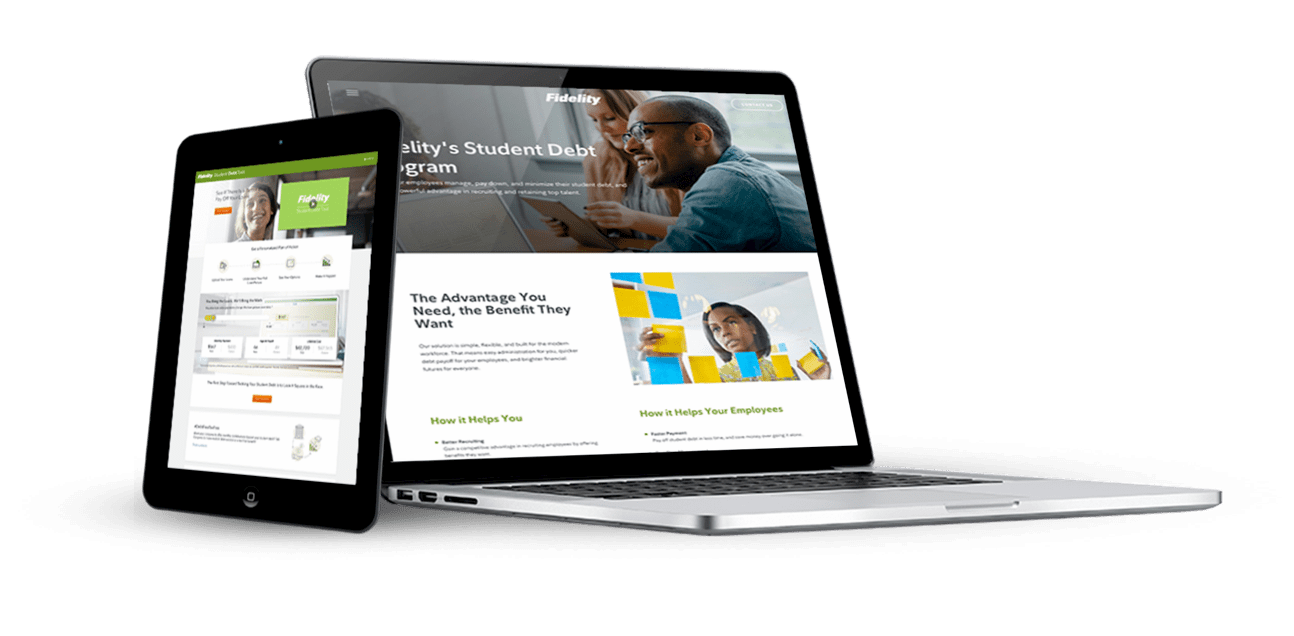Imagine being a new graduate with multiple student loans from multiple providers, and multiple options for repayment. For many new grads, student debt is the first big personal finance problem they’ve ever had to deal with. Financial literacy isn’t formally taught, so the cognitive load of figuring out student debt repayment can feel impossible.
Student debt affects 45 million US residents. Collectively, these borrowers are carrying $1.5 trillion in debt. Faced with such a heavy burden, borrowers are often unable to save for emergencies and retirement, and delay big life events, like marriage and homeownership.
How might technology make it easier for people to face their debt? We talk to Ashwini Srikantiah, vice president of workplace emerging products, about entering the student debt business.
How did the team narrow its focus when faced with a vast problem like the student debt crisis?
It took us about a year to understand the breadth and depth of this problem. We conducted thousands of user interviews to understand what was happening at the macroeconomic level as well as the microeconomic level. In the end, we identified several potential opportunity spaces, any of which could have been a starting point for developing a new product.
Which space did the team end up choosing?
We chose to start with guidance. We visualized a solution that took the complexity out of student debt repayment, which is confusing and overwhelming for many people.
Can you paint a picture of this complexity?
For many borrowers, student debt is the gateway to learning more about personal finance. It’s their first big personal finance problem, and the cognitive load can feel huge: What’s a loan? How does it work? What’s an interest rate? Why is this bad? It’s easy to put it off and trigger a domino effect that erodes financial wellness. People end up making hard compromises about important goals, like saving for emergencies, or retirement

"For many borrowers, student debt is the gateway to learning more about personal finance." — Ashwini Srikantiah
That is a big pain point. When people do want to get started, where should they go for more information?
When we started, there wasn’t any big, trusted name in this space—which felt like an opportunity for us. We’re not a lender, so we could be unbiased. We’d provide sound guidance, using our deep experience in scenario modeling. We also found that student debt is an impediment to saving for long-term goals. Since we’re in the business of helping people prepare for the future, it makes sense for us to also help people face their debt now.
How did the team translate this need for guidance into product features?
We envisioned a platform that enables borrowers to understand their loans—a platform where they could see their own personalized student debt picture, with their federal and private loans aggregated in one place. This would include visual scenario modeling of federal and private debt repayment programs, with options for contacting vetted private loan financers.

"By the time we transitioned into the core business, we were actually transitioning a multi-pronged suite of products." — Ashwini Srikantiah
So, the team defined their MVP (Minimum Viable Product). What happens between this milestone and going to pilot, to test an initial version of this product with customers? How would you explain this to someone new to Fidelity Labs?
We do the startup thing and pitch our business plan to our internal investors. If they like it, we get our “Series A” funding, grow our team, and build the pilot version of our product. If the pilot is successful, the product is integrated into one of our core business units and goes to market on a larger scale.
You mentioned at the beginning that the team identified other opportunity spaces within the scope of student debt. What happened with those?
Our work with the Fidelity Student Debt tool gave us a toehold in employee benefits; we were able to get a sense of employer interest in helping employees with their debt. By the time we transitioned into the core business, we were actually transitioning a multi-pronged suite of products.
“Multipronged” as in different approaches to easing the pressure of student debt?
Yes. Altogether, these products cover the whole journey of planning for, paying for, and paying off going to college. Fidelity College Success Planning, opens in new window., another product out of Fidelity Labs, helps families make realistic financial decisions—and not take on too much debt—while choosing which college to attend.
Also, now our product is part of the larger Fidelity Student Debt Program, opens in new window., which offers repayment assistance as an employee benefit, enabling employers to help borrowers pay off debt faster.